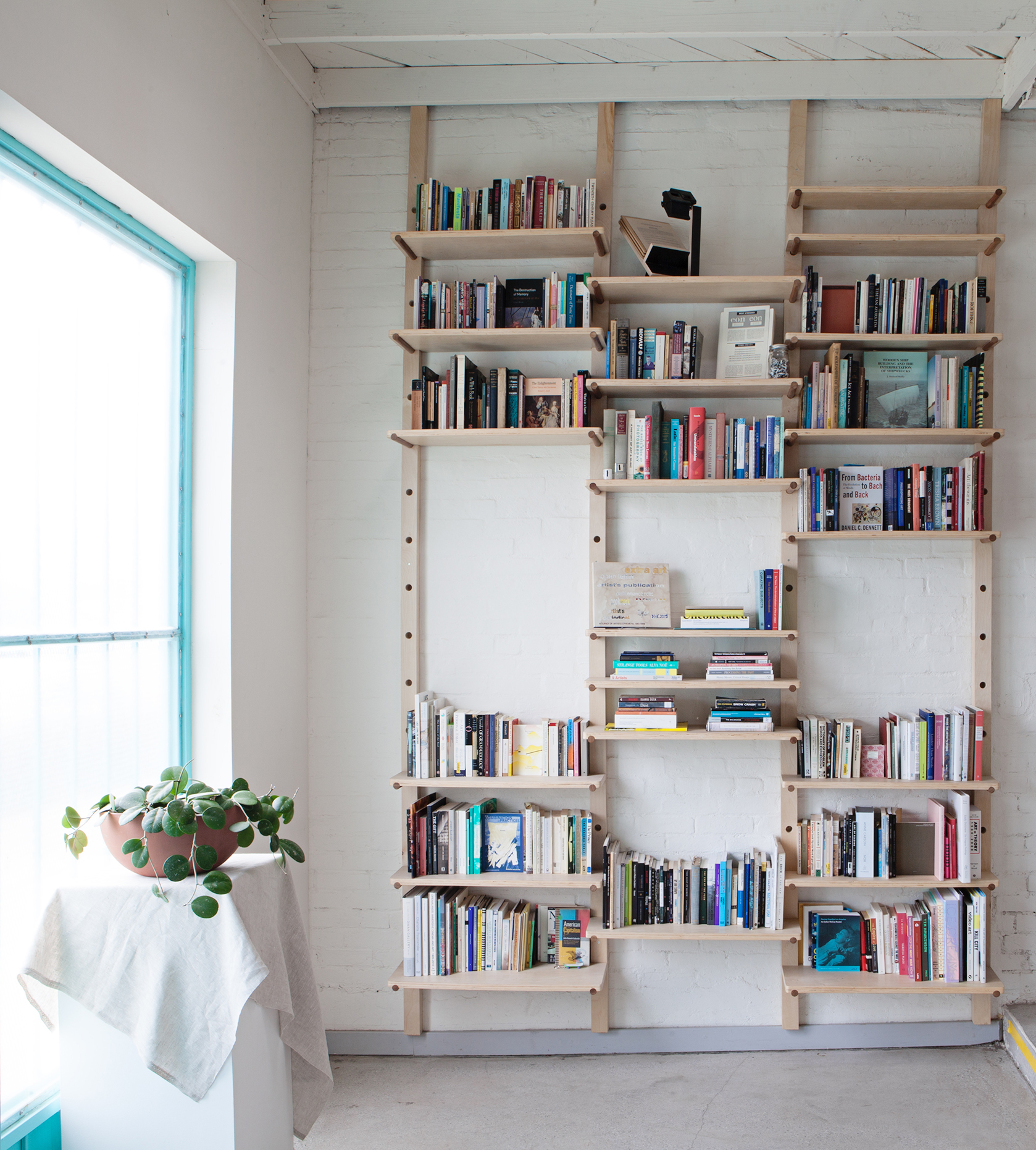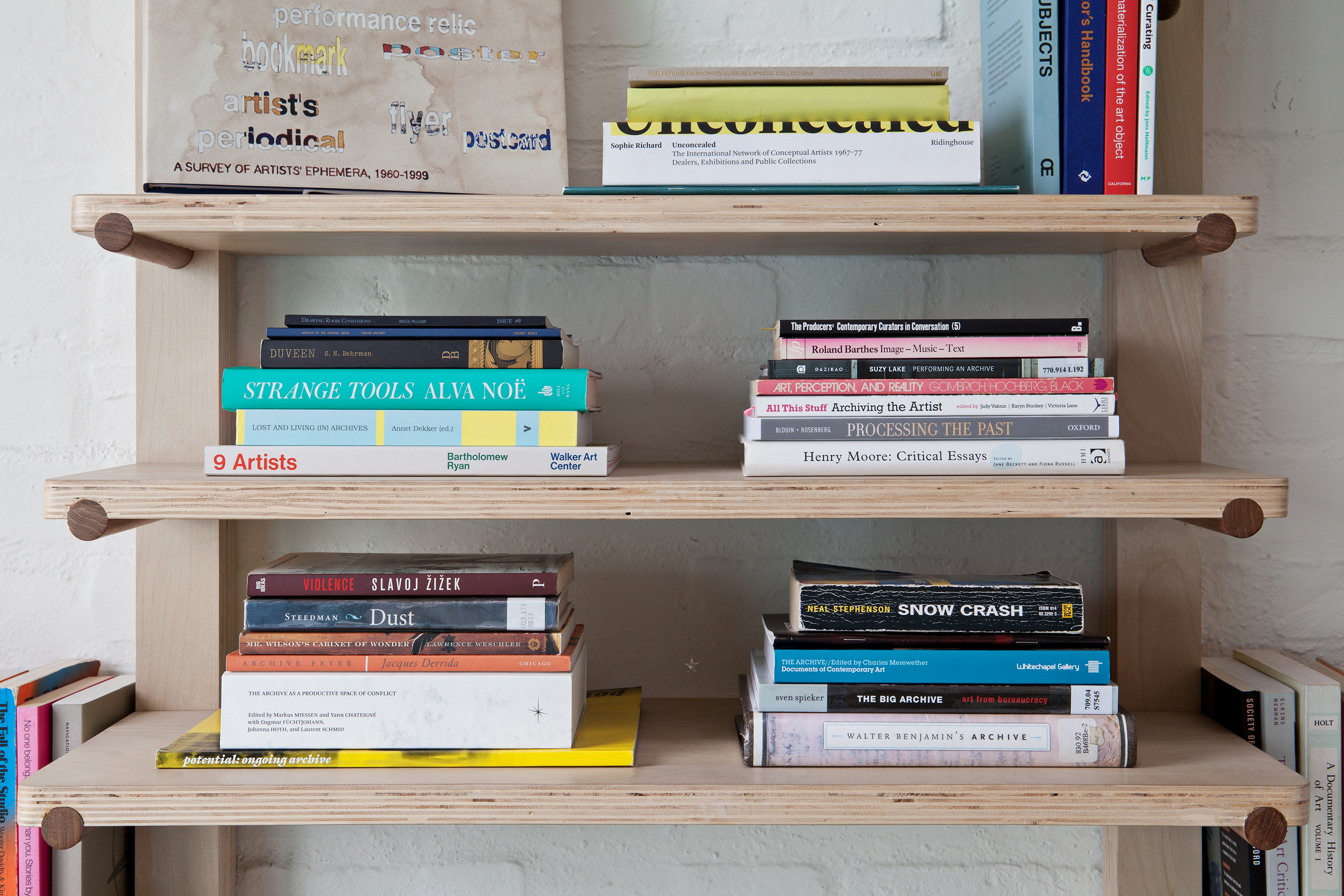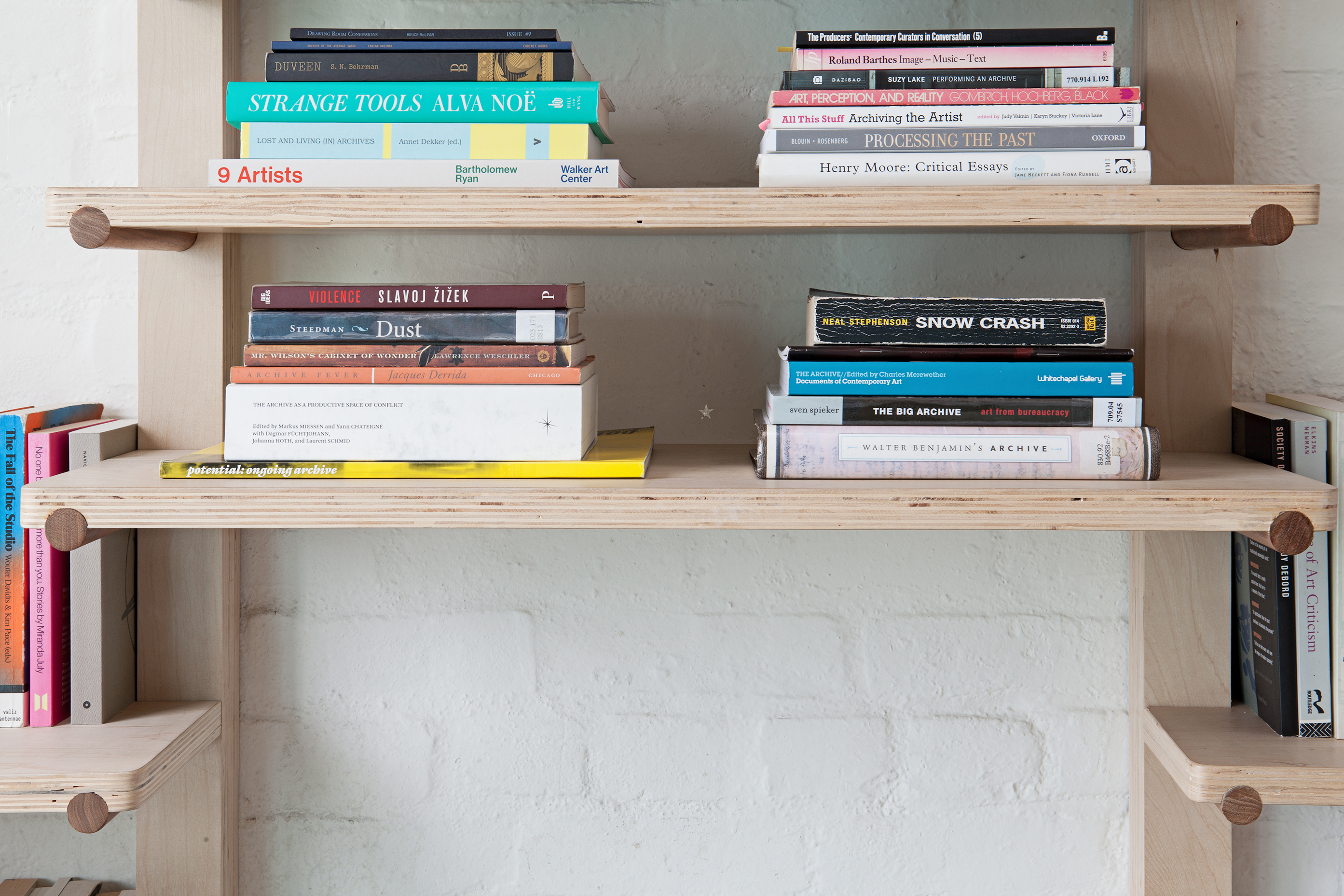Ann Harezlak
I am a Curator and an Art Historian and, having the fever, I am an Archivist. The Archive, as concrete material and ontological construct, is the method and medium by which my creative practice has traversed disciplines over these past ten years. I am compelled by the Archive: to organize, to interpret, to find value. I archive to produce and to reproduce alternative understandings of origin, order, and authority.
I tug at the spines along my personal bookshelves. These texts are adjuncts to my practice, offering critical frameworks, exhibition constructs, and even titles for past projects. They are instruments used for mapping the conditions of my labor and the development of my manifesto. They offer questions such as, “how do you look historically at the present?”; “how do digital technologies that allow Archives to be flexible systems (rather than stable entities) affect our relationship to the past?”; and, under what conditions can an archive become unarchival and/or a-archival?”
When relocating overseas, I had to actively edit my book collection, considering each text from the simultaneous viewpoints of weight and essentiality. I designated value based on influence, canonicity, enjoyment, and provocation. In these pages I see not only my choices but the people who have informed and continue to shape pathways for both my independent professional practice and the unfolding of my singular identity. These texts are objects that cannot be deaccessioned, as each time they are reopened within a new context they become a new site for inquiry.
Now, looking at my own archive, my boxes of exhibition ephemera collected from projects I physically attended or personally worked on, I ask questions about content, context, and how we develop networks of exchange. But my collaboration with the material alone is not enough. What are the moral and ethical aspects of collaboration within the process of archiving—particularly when the material is re-homed within an institution—when the conversations regarding its categorization reveal differences in cultural and historical values?
While I am an Art Historian and I am an Archivist, in the context of the 3307 BOOKSHELVES residency I am first a Rememberer. But is my archive useful only to me? How can a personal archive consider others? One can determine the contents and conditions of their collection, though the original narrator is ultimately not the audience of her own materials; it is posterity who will re-inscribe and reanimate the Archive with their future need.
Ann Harezlak is an archivist, art historian, and curator and who lives and works between Los Angeles and London. Her transdisciplinary practice considers archives and ephemera as primary materials for exhibition-making and focuses on notions of hybridity across objects and relations. She is currently a research assistant in the digital humanities department at the Getty Research Institute, and has assisted major archival acquisition projects at institutions such as Tate Archive, the Henry Moore Foundation, Special Collections at the Chelsea College of Arts Library, and the Ian Hamilton Finlay Archive at William Allen Word & Image. In addition to her archival practice, Harezlak is a founding member of the curatorial collective Five Story Projects (FSP), a key contributor to London’s self-organized exhibition culture of the late 2000s, and is currently half of KollActiv, a nomadic exhibition platform for contemporary art practices. She has created exhibitions and public programs for institutions including Tate Britain, the Victoria and Albert Museum, the Henry Moore Foundation, the Burpee Museum of Natural History, (Rockford, IL), and the galleries Actual Size Los Angeles and Sonce Alexander Gallery. Her writings and research have been published by Tate Research, Tiny Splendor Press and Bright Light Film Journal. She received an MA in Critical Writing and Curatorial Practice from the University of the Arts London and a BFA in Photography from the University of Illinois.



